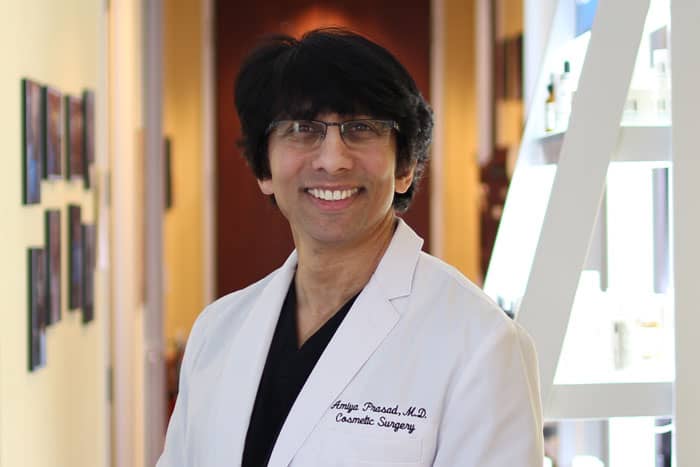Double eyelid surgery also known as Asian eye surgery is a popular procedure because approximately half of people of Asian descent are born without an eyelid crease, including people of Chinese, Japanese, Korean, and other Asian ethnicities. Many people take an eyelid crease for granted, but not having one can make the eyes appear smaller, so double eyelid surgery is about making the eyes look bigger and brighter, not just creating a crease.
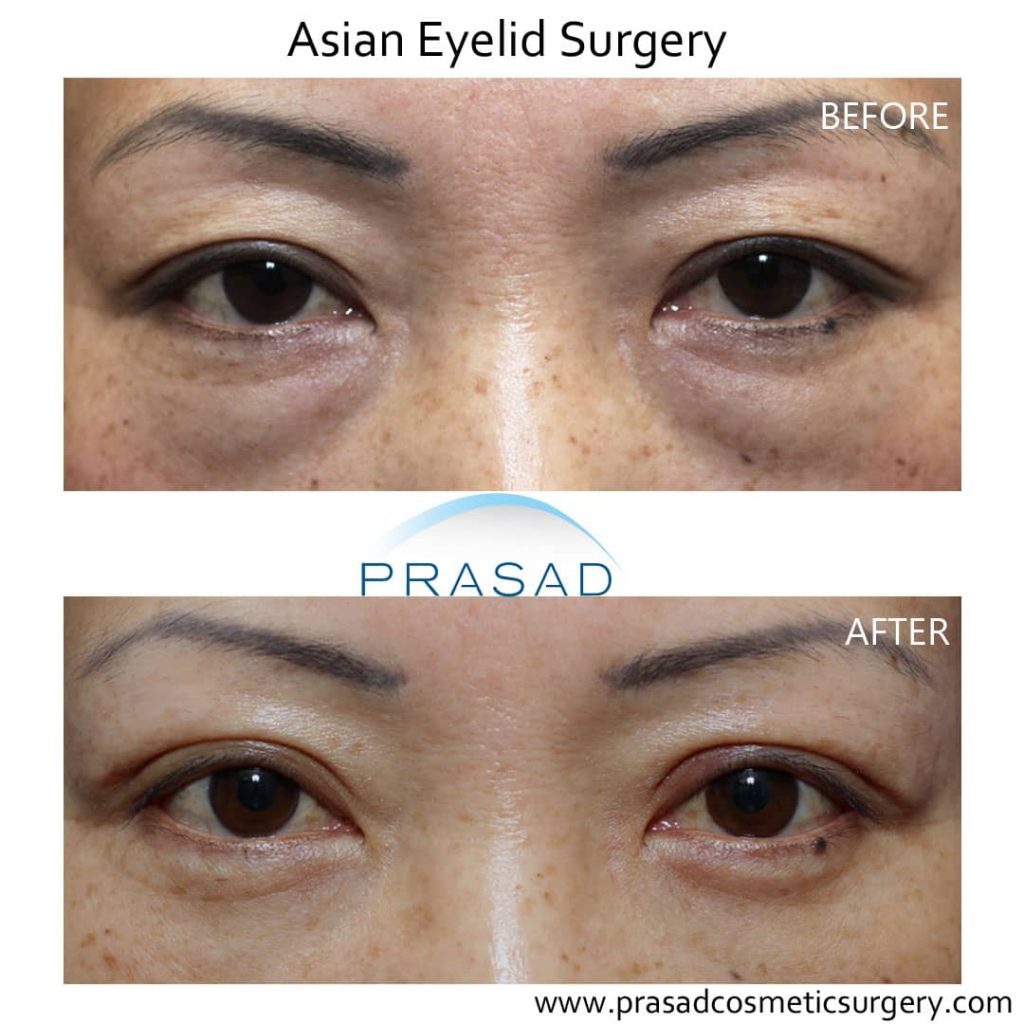
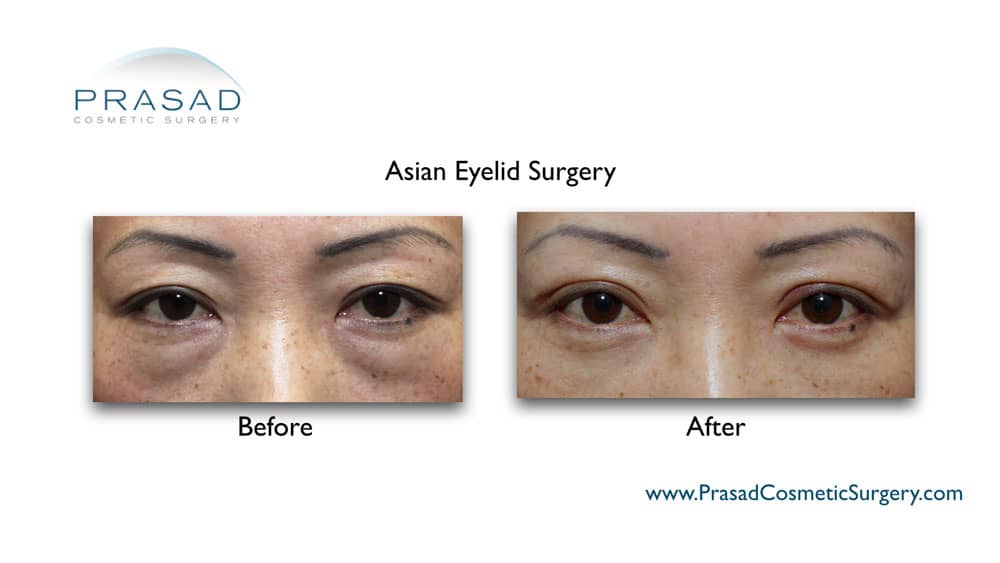
Tapered Eyelid vs Parallel
People considering double eyelid surgery learn about the various types of eyelid creases, including the parallel crease, which runs parallel to the opening of the upper eyelid, and the tapered or nasally tapered crease, which meets the eyelid opening at the corner near the nose.
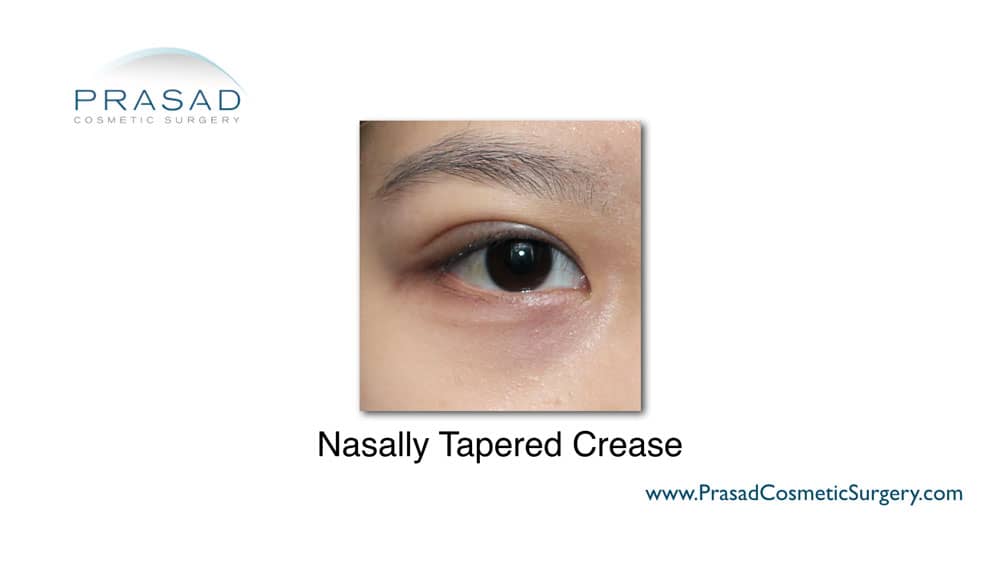
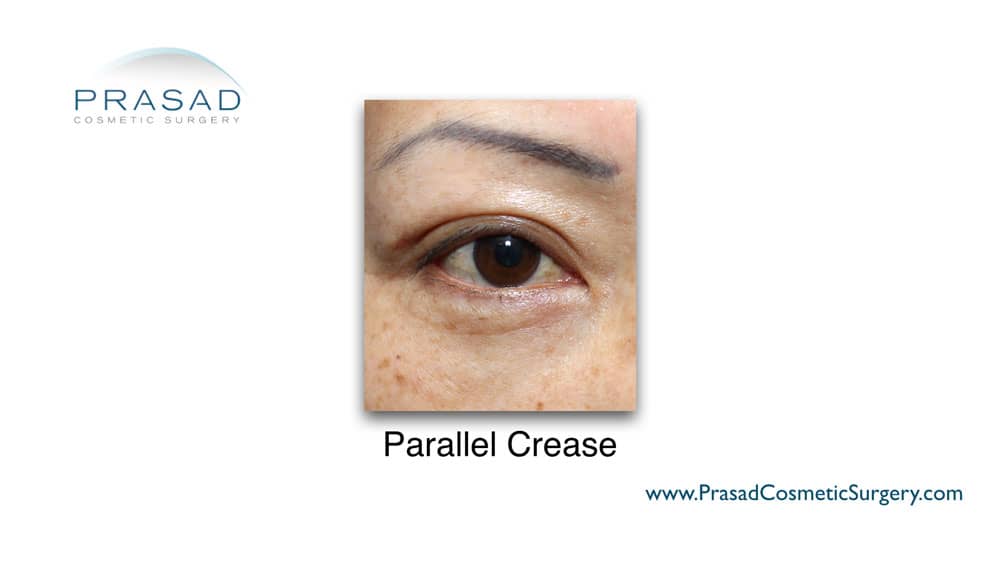
Some people who are considering Asian eye surgery wonder if they can choose the type of eyelid crease they want, but there is more to it. I’ll explain how I show my patients the best eyelid crease for their appearance, and their natural anatomy.
As previously stated, approximately 50% of Asians, and a smaller number of other ethnicities are born without an eyelid crease. Even if a person is born without an eyelid crease, certain anatomical structures in the eyelids allow a natural eyelid crease to form. Where the natural crease would have formed can be determined by pushing the eyelid skin back with an instrument or a Q-Tip. Pushing back the skin also demonstrates how the patient’s anatomy would have determined whether a natural crease would have been parallel, nasally tapered eyelid crease, or a combination of the two.
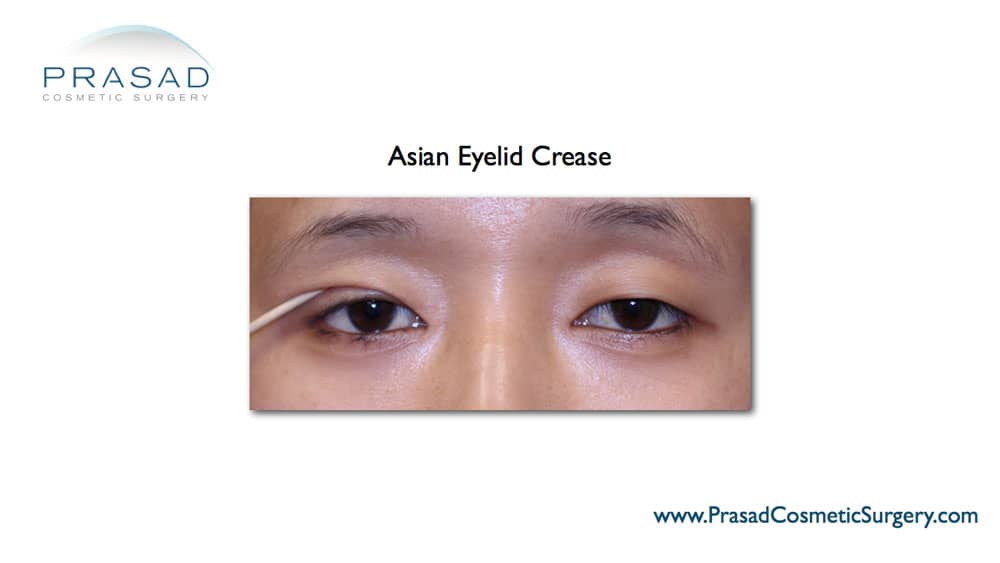
To answer the question of whether a patient can choose their preference between a parallel or nasally tapered eyelid crease, or a combination of both, the answer is their natural anatomy determines it for them. Forcing a crease that does not fit your natural anatomy will likely cause some problems in results and appearance. Forcing a type of crease that doesn’t fit your natural anatomy will result in an unnatural-looking crease.
Results will also be less predictable if you force an unsuitable crease, as the surgical connection may not hold as it resists the natural anatomy instead of working with it, possibly resulting in a shallower, less defined crease; or possibly resulting in multiple creases during or after recovery. Fortunately, you get a good idea of what the crease will look like before you commit to surgery, so you can decide whether the parallel or nasally tapered crease is best for you.
Asian Eye Surgery
In general, there are two approaches to Asian eyelid surgery: incisional, and non-incisional. The approach is also determined by anatomy, rather than what the patient believes is less invasive.
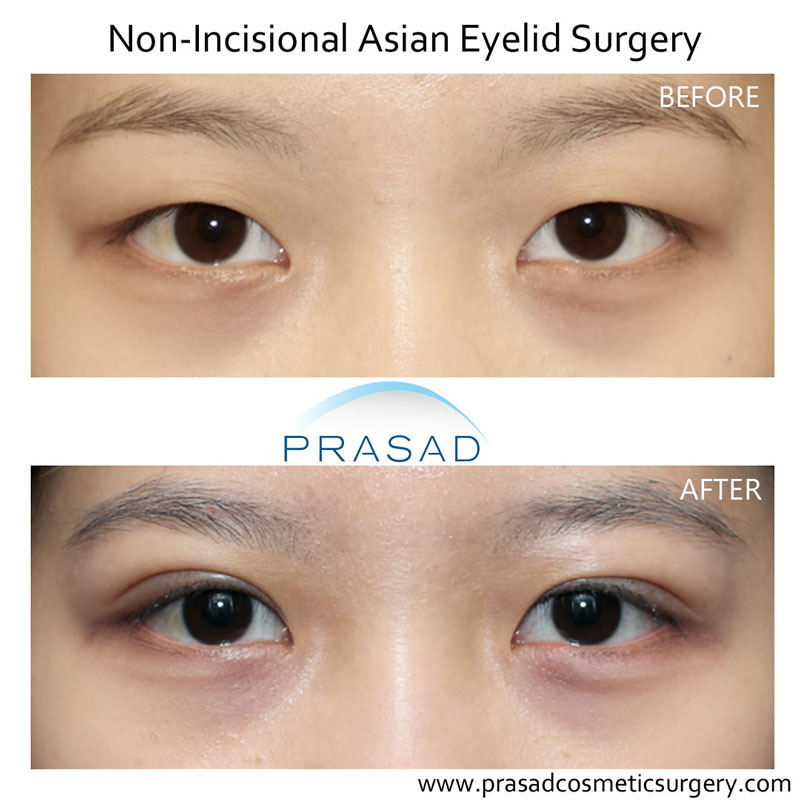
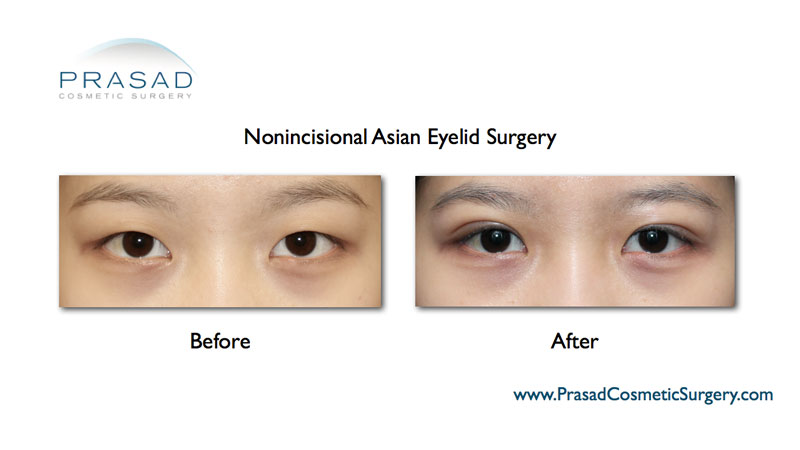
Non-incisional Technique
Younger patients in their 20s and 30s are less likely to have redundant or stretched eyelid skin over their eyes, nor do they have fat beneath the upper eyelid which prevents crease formation. In these cases, the non-incisional approach is used, in which no eyelid skin or fat is surgically removed, eliminating the need for long incisions. Instead, sutures are passed through smaller incisions in the upper eyelid. Sutures are used to create a connection between the upper eyelid skin, and the levator muscle which lifts the eyelid. This connection is made where the eyelid skin folds when the eye is opened, creating a crease where there was none previously.
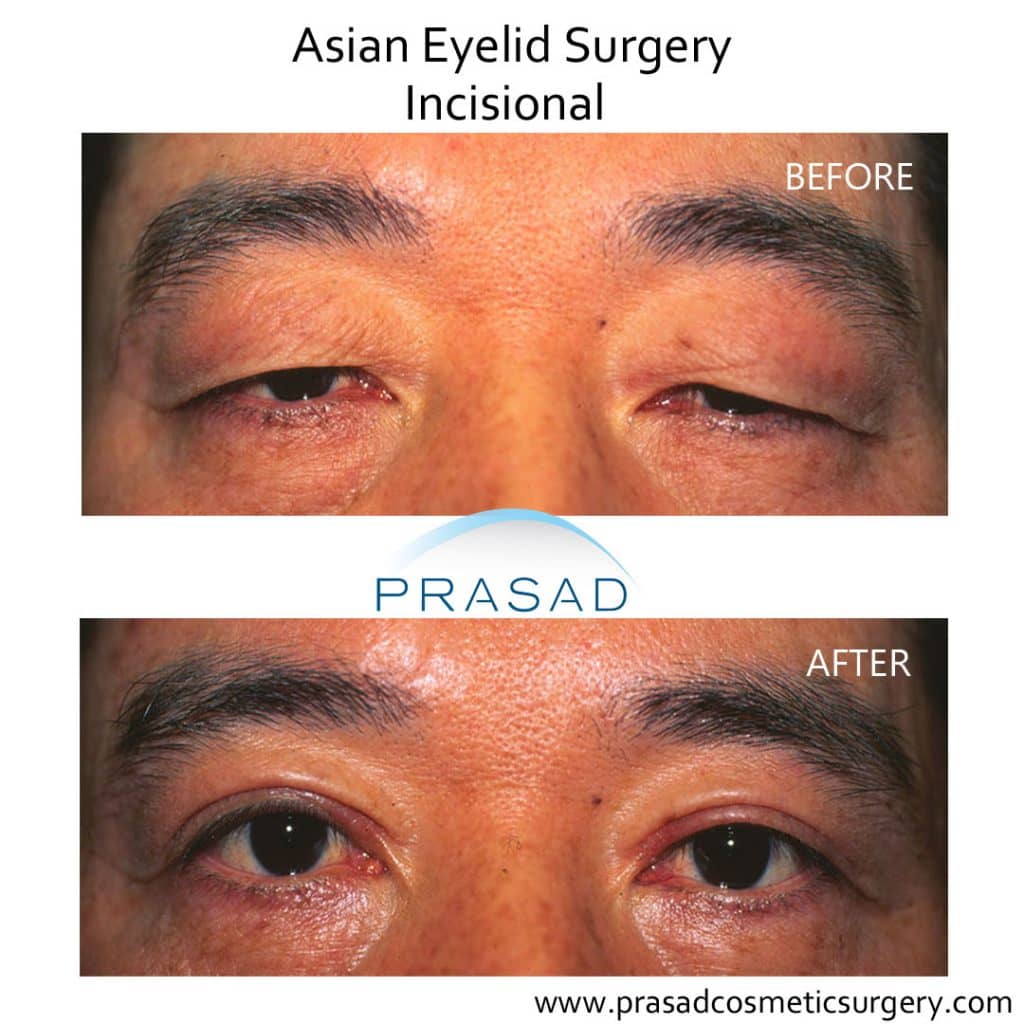
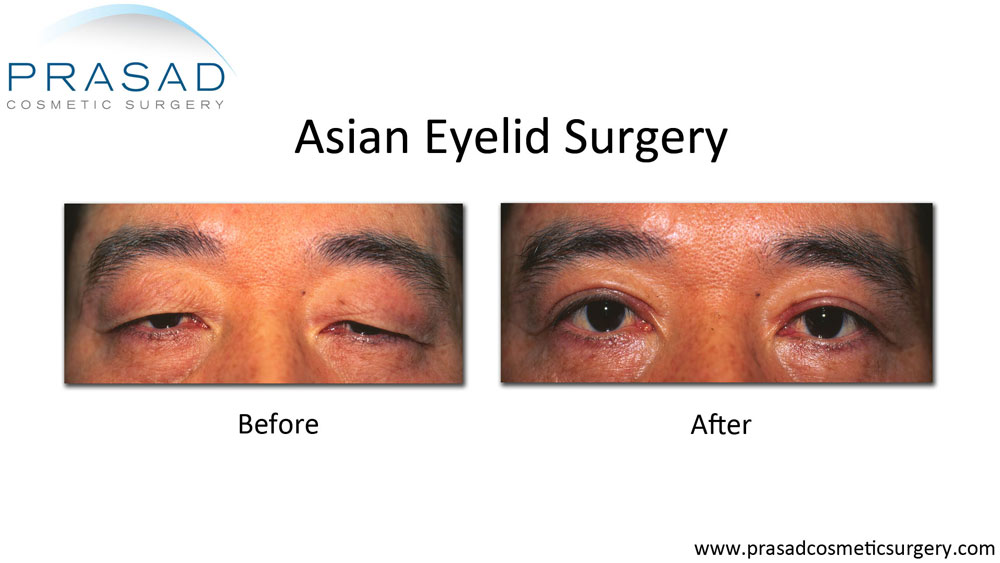
Incisional Technique
Some eyelid skin needs to be carefully measured and excised for older patients in their late 30s and older who have already experienced some eyelid skin laxity due to aging, as well as some accumulated fat behind the upper eyelid, so an incision along the upper eyelid is required. Fat is also removed through this incision because it prevents the eyelid skin from connecting to the muscle. Sutures are used to close the incision, and the crease is formed where the suture connects the eyelid skin and the levator muscle, just like in the non-incisional approach.
Asian Double Eyelid Surgery Recovery
In either case, our Asian eye surgery patients recover quickly, with less swelling than double eyelid surgeries performed elsewhere. All of my eyelid surgeries are done under local anesthesia with LITE IV sedation, so patients can go home right away without the lingering effects of general anesthesia. When patients return home from surgery, they apply cold compresses for 20 minutes on and 20 minutes off to help reduce post-surgical swelling.
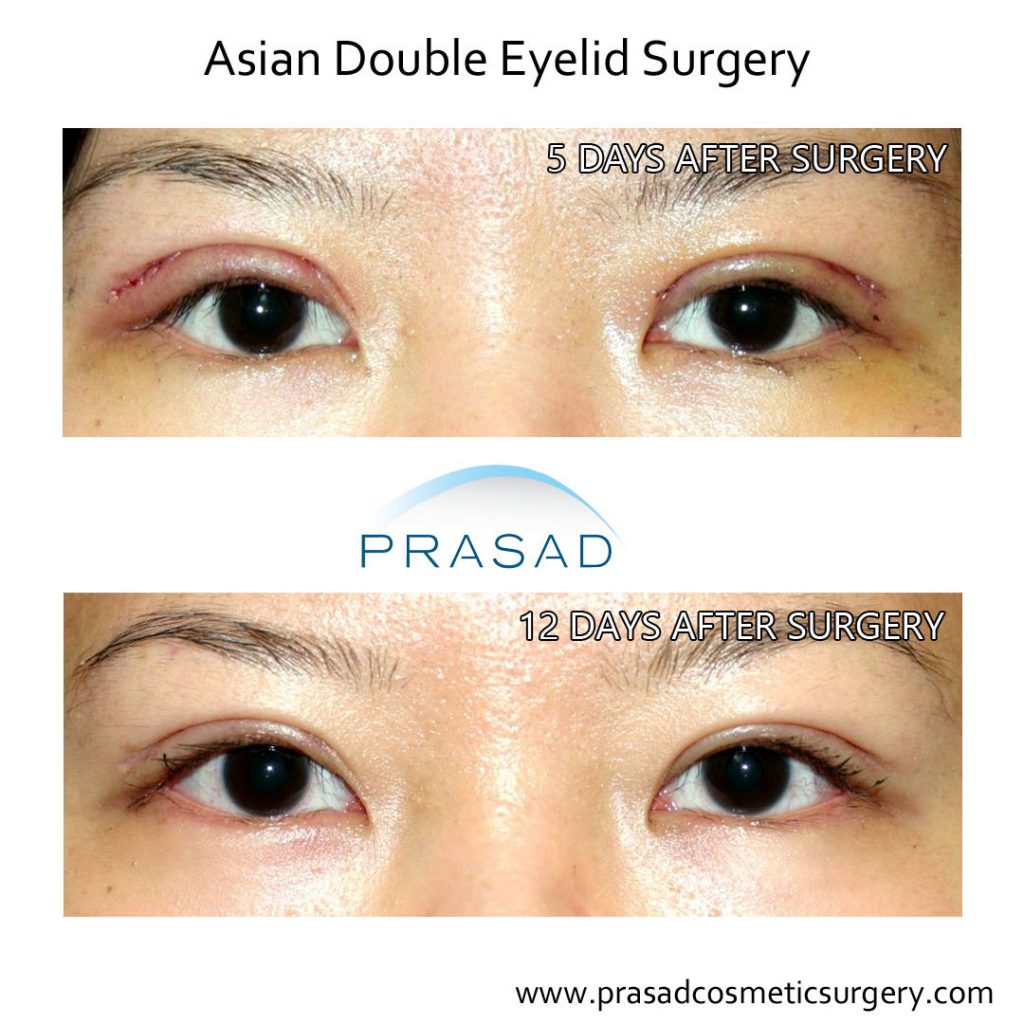
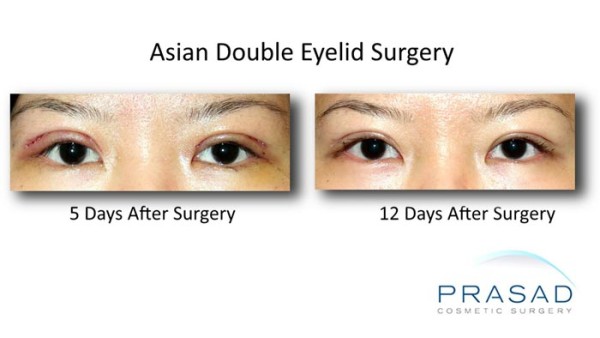
Cold compresses, and antibiotic ointment are applied to the suture line for the first two days only to avoid an allergic reaction or contact dermatitis from prolonged use. After two days, a petroleum-based ointment such as Aquaphor is applied to the incision line to create a moist environment conducive to healing. After two days, warm compresses are applied for 20 minutes on and 20 minutes off during the waking hours to help clear fluid that causes temporary swelling. The majority of the temporary swelling goes away after the first month when disorganized collagen fibers flatten. Some swelling may be visible after the first month, but the majority resolves within 3 months after surgery. Patients are close to their final appearance after 6 months, but full surgical healing takes about a year.
While parallel or nasally tapered eyelid creases are not entirely a free choice, it is important to follow what the body would have created naturally if one was born with an eyelid crease. Discovering what the body allows in double eyelid surgery is important to see before any incision is made, so that a natural-looking, beautiful result that is unique to you can be revealed.
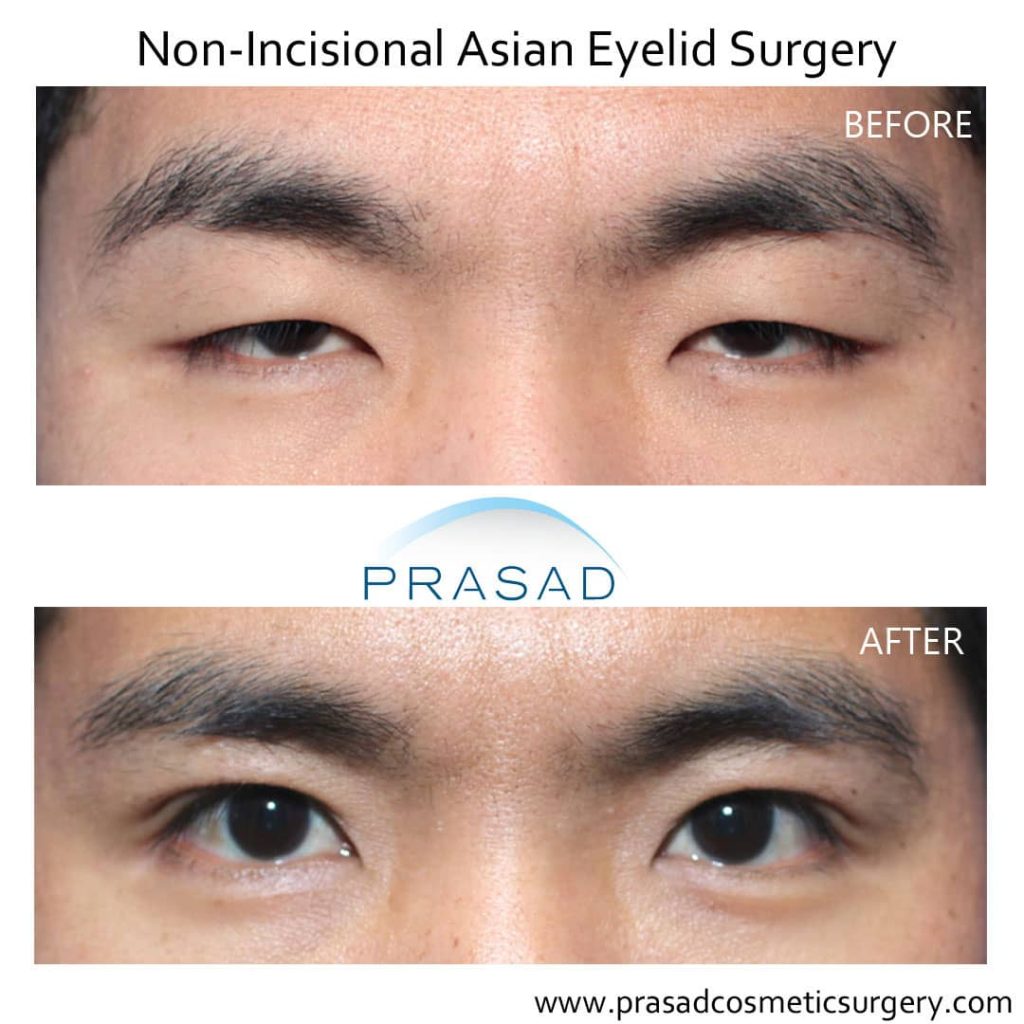
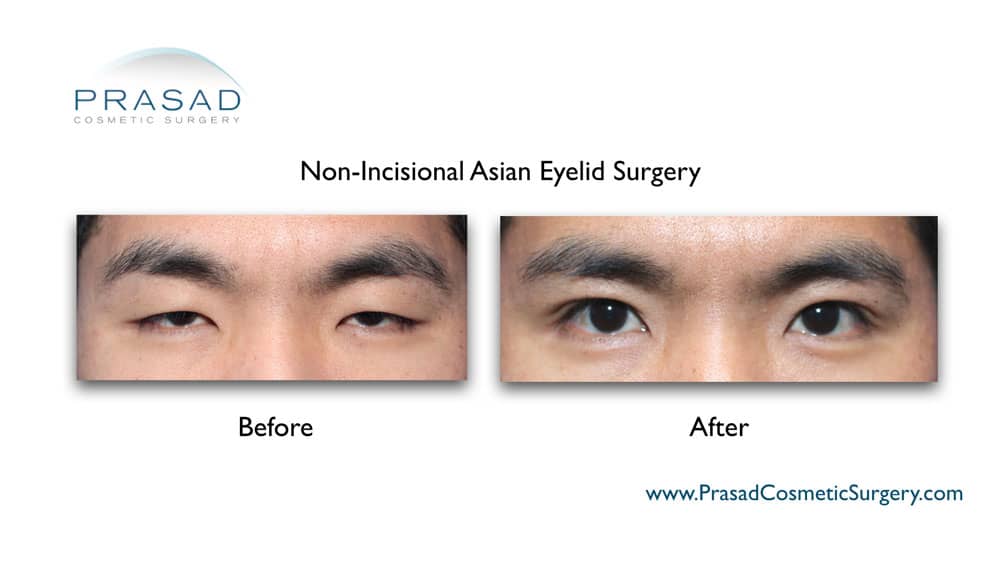
Asian Eye Surgery NYC and Long Island, New York
Dr. Amiya Prasad is a Board-certified cosmetic surgeon and Fellowship-trained oculofacial plastic and reconstructive surgeon. He’s been in practice in New York City and Long Island for over 25 years. He performs all types of cosmetic eyelid surgeries, and is well known for performing Asian eye surgery, with minimal post-surgical swelling and recovery time.
To schedule a consultation you may fill up the form below or contact any of our offices: Manhattan at (212) 265-8877; Garden City, Long Island at (516) 742-4636; or Vienna, Virginia at (703) 356-1336.

